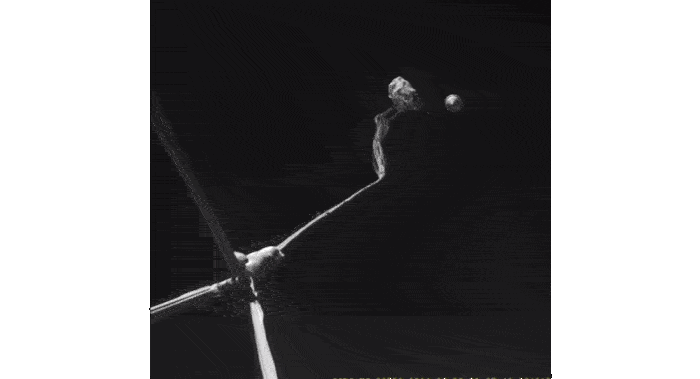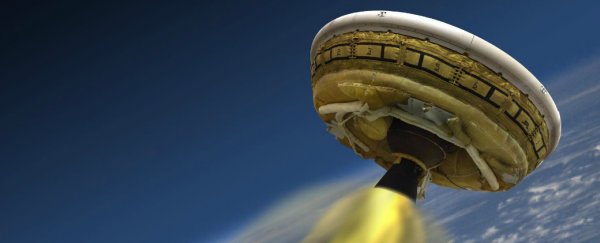On Monday June 8, NASA tested their low-density supersonic decelerator (LDSD) spacecraft, which looks exactly like a flying saucer.
NASA hopes that this spacecraft could one day transport astronauts to the surface of Mars. But Monday's test showed that engineers still have a ways to go and a lot to learn before they're ready for such a task.
You could say that every second of Monday's test led up to a critical moment: When the spacecraft deployed its supersonic parachute.
This parachute is the largest parachute ever designed for a spacecraft - it could cover an entire American football field - and its purpose is to slow the vehicle down so that so it doesn't crash into the Martian surface, killing the astronauts inside.
Unfortunately, Monday's test failed to achieve what it set out to do: keep the parachute intact.
When NASA first tested LDSD last year, everything went according to plan except the parachute. Within seconds of deployment, the chute shredded to pieces (see the GIF below). Over the last year, the LDSD team has examined what they think went wrong and redesigned a brand new chute that they were sure would do the job this time.

"We think we have it, but it will be the visuals LDSD brings back that will tell the tale," Ian Clark, principal investigator of LDSD from NASA's Jet Propulsion Laboratory, Pasadena, California, said in a NASA statement just a week before the Monday's test flight. "As long as our chute open to the point where the canopy is fully inflated, and I think we will do that, we will have learned something valuable."
Unfortunately, the same thing happened this time - the parachute shredded apart.
Now, it's back to the drawing board, but how they're going to fix this outstanding problem of the pesky parachute is not clear. NASA isn't giving up though: They have scheduled a third test flight of the LDSD for the summer of 2016.
This article was originally published by Business Insider.
More from Business Insider:
